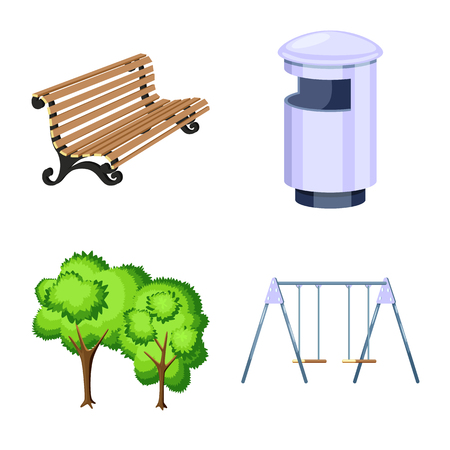Architectural Characteristics
When examining the architectural characteristics of Victorian and Edwardian homes in the UK, several key distinctions emerge that reflect both the aesthetic values and technological advancements of their respective eras. Victorian houses, built between 1837 and 1901, are celebrated for their steeply pitched roofs, ornate gables, and intricate decorative brickwork. Tall, narrow windows with sash frames and bay windows are quintessential features, often complemented by elaborate stone or terracotta detailing around doors and windows. The façade materials typically involve red or yellow brick, sometimes accented with polychromatic patterns to add visual interest.
In contrast, Edwardian homes, constructed from 1901 to 1910 (and sometimes extending into the early 1920s), present a more restrained and airy appearance. Rooflines are generally less steep and often incorporate prominent overhanging eaves supported by exposed rafters. Timber framing and mock-Tudor elements become more prevalent, particularly in suburban developments. Facades shift towards lighter-coloured bricks or roughcast render, with larger windows that invite abundant natural light into the interiors. Decorative features are still present but tend to be simpler, focusing on elegance rather than excess. These architectural differences not only define the visual identity of each period but also reveal broader shifts in social attitudes and construction technologies during late nineteenth- and early twentieth-century Britain.
2. Interior Layout and Space Planning
The spatial organisation of Victorian and Edwardian homes reveals much about the shifting social ideals and domestic expectations in Britain during these periods. While both styles are cherished for their character, they present markedly different approaches to interior layout, room proportions, and the overall sense of flow.
| Aspect | Victorian Homes | Edwardian Homes |
|---|---|---|
| Spatial Arrangement | Typically feature a more compartmentalised structure with distinct, separate rooms dedicated to specific functions. Hallways tend to be narrow, and rooms are often arranged off central corridors. | Embrace a more open plan ethos, with broader hallways and an increased sense of connectivity between living spaces. There is a noticeable shift towards lighter, airier layouts that encourage social interaction. |
| Room Proportions | Rooms are generally smaller with higher ceilings, giving a formal and sometimes imposing feel. The parlour and drawing room are focal points, emphasising privacy and hierarchy within the home. | Proportions become squarer and more balanced, with lower ceiling heights compared to Victorians. Reception rooms are larger and more versatile, reflecting a trend towards informal family living. |
| Sense of Flow | The flow between spaces is deliberately restricted, underlining clear boundaries between public and private zones within the house. This separation reflects Victorian values of order and propriety. | An improved sense of flow is achieved through wider doorways, larger windows, and often French doors leading to gardens or verandas. Edwardian layouts support a freer movement between indoor and outdoor spaces, aligning with a lifestyle valuing leisure and openness. |
The evolution from Victorian compartmentalisation to Edwardian openness mirrors broader societal changes—moving away from rigid formality towards comfort and sociability. This transformation in interior planning continues to inspire contemporary renovations, as homeowners seek to balance heritage features with modern living preferences.

3. Decorative Details and Materials
When it comes to decorative details and materials, the contrast between Victorian and Edwardian homes in the UK is particularly striking. Victorian interiors are renowned for their lavish ornamentation, featuring intricate cornicing, elaborate ceiling roses, and detailed plasterwork. These embellishments were intended to showcase the homeowner’s status and appreciation of fine craftsmanship. Richly patterned wallpapers, dark wood panelling, and stained glass windows were also common hallmarks, creating spaces that felt both opulent and intimate.
In contrast, Edwardian houses embraced a lighter, more restrained aesthetic influenced by the Arts and Crafts movement and a growing desire for simplicity. Decorative features became subtler—cornices were slimmer and less pronounced, while ceiling roses were often smaller or omitted entirely. Edwardian interiors favoured pastel colours, painted timber over dark woods, and delicate fretwork instead of heavy mouldings. This shift reflected changing tastes at the turn of the century, as homeowners sought brighter rooms and a sense of airiness previously lacking in Victorian properties.
The evolution from intricate Victorian embellishments to the graceful simplicity of Edwardian design marks a clear transition in British domestic architecture. Each style offers a unique atmosphere: Victorian homes envelop with drama and detail, while Edwardian residences invite in light and understated elegance.
4. Windows and Doors
One of the most visually distinctive differences between Victorian and Edwardian homes in the UK lies in the treatment of windows and doors. Each era reflects its own architectural priorities, especially in terms of natural light, ventilation, and decorative detail.
Glazing Styles and Window Proportions
Victorian homes typically feature tall, narrow sash windows with multiple small panes, a design influenced by earlier building regulations and technological limitations of glass production. The use of stained or etched glass was also common, especially for front door panels and transoms, adding both privacy and a splash of colour. By contrast, Edwardian houses embraced larger panes of glass as manufacturing advanced, allowing for wider, squarer sash windows that invited more daylight into living spaces. Bay windows became more prominent, enhancing both interior brightness and the homes street presence.
| Victorian | Edwardian | |
|---|---|---|
| Window Shape | Tall & narrow sashes | Wider & squarer sashes, bay windows |
| Glazing | Multiple small panes, stained or etched glass | Larger single panes, minimal ornamentation |
| Natural Light | Moderate; prioritised privacy over openness | Maximised; brighter interiors were desirable |
Door Designs and Prioritisation of Ventilation
The main entrance doors during the Victorian period often displayed intricate carvings and were typically solid wood with decorative fanlights above to admit some light. Side windows (sidelights) were less common but sometimes present in grander properties. In the Edwardian era, front doors became plainer in design but were frequently flanked by glazed panels or sidelights, further increasing the flow of natural light into hallways. The emphasis on health and hygiene during this time led to a greater focus on ventilation: transom windows that could be opened independently became popular features above both external and internal doors.
Summary Table: Doors Across Periods
| Victorian Door Features | Edwardian Door Features | |
|---|---|---|
| Main Material | Solid wood with ornate detailing | Simpler timber designs; occasional glazing |
| Fanlights/Sidelights | Decorative fanlights above door, limited sidelights | Larger glazed panels or sidelights for extra light |
| Ventilation Approach | Small opening fanlights for modest airflow | Bigger transom windows for improved ventilation |
Cultural Context: A Shift in Domestic Priorities
The move from Victorian to Edwardian window and door styles reflects broader cultural changes. Victorians valued privacy and ornate craftsmanship, resulting in heavier proportions and intricate details. Edwardians preferred openness, sunlight, and fresh air—values echoed in their lighter, more straightforward architectural elements. These subtle yet significant differences continue to define period homes across Britains streetscapes today.
5. Gardens and Outdoor Spaces
One of the most notable evolutions between Victorian and Edwardian homes in the UK is reflected in their gardens and outdoor spaces. During the Victorian era, gardens were often formal, structured, and designed to be admired from inside the home rather than used as an extension of living space. Ornamental flowerbeds, cast iron railings, and intricate pathways were common features, emphasising display over functionality.
With the arrival of the Edwardian period, there was a pronounced shift in the relationship between home and garden. The suburban boom allowed for larger plots, enabling homeowners to embrace more expansive and informal garden layouts. The Edwardian garden became a sanctuary for relaxation, social gatherings, and play—a true extension of the home itself. Lawns grew wider, herbaceous borders flourished with pastel perennials, and mature trees provided dappled shade for afternoon tea outdoors. There was a clear move towards integrating greenery not just as decoration but as an essential part of daily life.
This period also saw the rise of features such as pergolas, arbours, and summerhouses—elements that blurred the boundaries between indoor comfort and outdoor beauty. In contrast to the sometimes restrictive Victorian approach, Edwardian design encouraged families to step outside, enjoy nature, and cultivate a sense of well-being through their connection with the garden. This transformation marked the beginning of what many now recognise as the quintessential British suburban garden: lush, inviting, and intimately woven into the fabric of home life.
6. Cultural Influences and Social Context
The transformation from Victorian to Edwardian home styles in the UK cannot be fully understood without exploring the wider social shifts, technological advances, and cultural movements that shaped these iconic periods. The Victorian era, spanning much of the 19th century, was defined by the Industrial Revolution—a time of rapid technological innovation, expanding railways, and newfound prosperity for the middle classes. This surge in wealth and urbanisation encouraged ornate architectural detailing, eclectic room layouts, and an emphasis on privacy within the home. Interiors were often layered with rich textures, dark woodwork, and elaborate decorative motifs inspired by global influences brought back from the British Empire.
With the arrival of the Edwardian era at the dawn of the 20th century, British society underwent further transformation. The mood shifted toward optimism and openness as advancements in electricity, plumbing, and construction techniques made homes brighter and more comfortable. Social reforms and a growing appreciation for leisure led to homes designed for entertaining and family life. There was a move away from Victorian formality towards lighter interiors with pastel palettes, larger windows, and open-plan living spaces. Influenced by the Arts and Crafts movement, Edwardian architecture embraced craftsmanship while rejecting excessive ornamentation—reflecting a desire for both beauty and practicality.
The changing role of women, increased access to education, and the impact of global exhibitions also left their mark on domestic design. These broader cultural forces helped shape not just how homes looked but how they functioned—transforming the British home from a symbol of status into a space for modern living.


